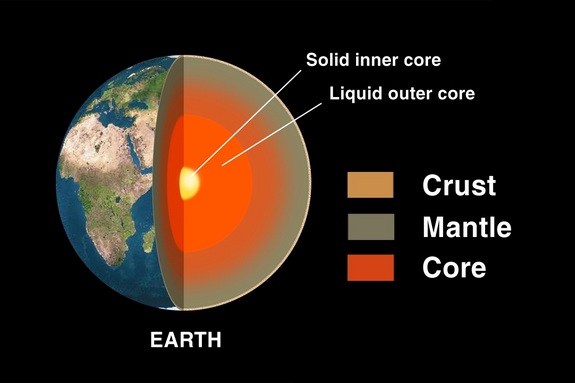How Earth's Core Got Its Iron


Billions of years ago, the newborn Earth morphed from a messy ball of mixed-up rock to a perfectly layered planet with an iron core.
A new model explaining this mysterious process suggests the core was created as dribs and drabs of iron percolated inward from Earth's lower mantle, according to a study published Oct. 6 in the journal Nature Geoscience. The mantle is the viscous, rocky layer between the crust and Earth's iron core.
To confirm the model, researchers recreated the conditions of the early Earth. By squeezing a tiny speck of iron and rock between two diamond-tipped anvils, and then zapping the whole shebang with a laser, scientists mimicked the hot temperatures and high pressures inside the young planet.
The experiment revealed that the right conditions were present in the lower mantle for iron blobs to connect and form continuous channels, and then tunnel into the core. [What Is Earth Made Of?]
Earlier studies had found that in the upper mantle, iron stayed in isolated pockets, leading researchers to pooh-pooh the idea that iron percolated into the core.
"In order for percolation to be efficient, the molten iron needs to be able to form continuous channels through the solid," lead study author Wendy Mao, a geoscientist at Stanford University in Palo Alto, Calif., said in a statement. "Scientists had said this theory wasn't possible, but now we're saying, under certain conditions that we know exist in the planet, it could happen. So this brings back another possibility for how the core might have formed."
Email Becky Oskin or follow her @beckyoskin. Follow us @OAPlanet, Facebook & Google+. Original article on LiveScience's OurAmazingPlanet.
Get the world’s most fascinating discoveries delivered straight to your inbox.



